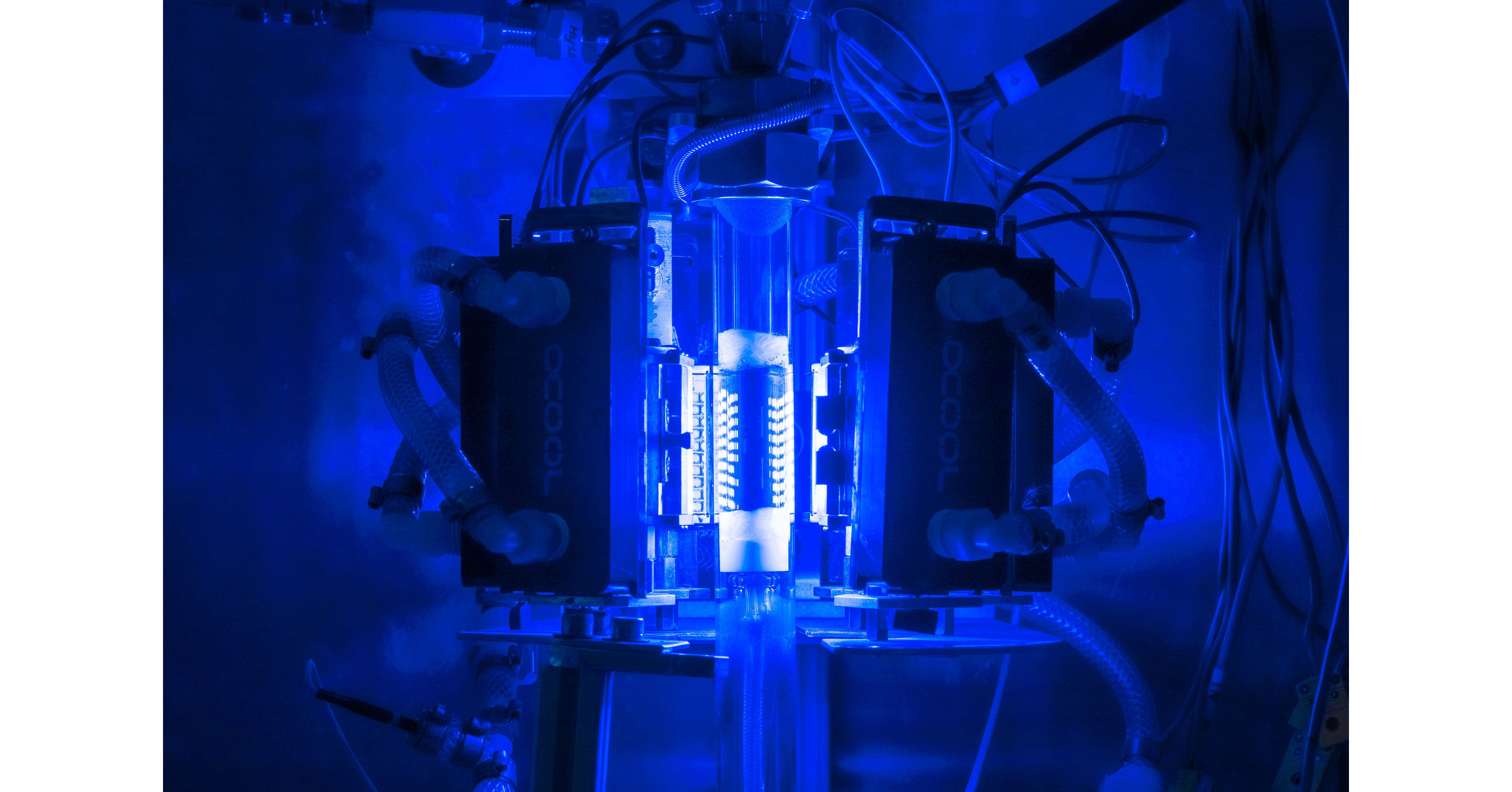
Fighting Climate Change with Used Gas: Syzygy Plasmonics and RTI Achieve Breakthrough in CO2-to-Fuel Conversion
Published by Todd Bush on May 15, 2024
There's good news for the environment! Syzygy Plasmonics, a company on a mission to clean up the chemical industry, has joined forces with RTI International, a non-profit research institute, to achieve a major breakthrough. Their collaboration has successfully demonstrated a new method for producing clean fuels – not from fossil fuels, but from captured carbon dioxide (CO2) and methane (CH4), potent greenhouse gasses contributing to climate change.
This is a significant development, especially for the transportation sector, which is a major source of emissions. But why is this collaboration so important, and how exactly does this technology work?
RELATED: Syzygy Plasmonics Demonstrates Groundbreaking CO2-to-Fuel Solution with RTI International

Why Decarbonize Transportation?
Transportation, encompassing everything from our cars to airplanes, relies heavily on fossil fuels like gasoline, diesel, and jet fuel. Burning these fuels releases greenhouse gasses like CO2, trapping heat in the atmosphere and causing climate change. To tackle this issue, we need to find ways to decarbonize transportation, meaning we need to find alternative fuels that produce less or even zero greenhouse gas emissions.
Enter Syzygy Plasmonics' Innovative Technology
Syzygy Plasmonics has developed a game-changing technology: a method for converting captured CO2 and methane into low-carbon fuels. Here's the exciting part: these fuels can be used in existing engines, eliminating the need to modify vehicles or infrastructure.
The technology utilizes "light-driven reactors" that convert the captured greenhouse gasses into a valuable gas mixture called syngas. This syngas then feeds into a Fischer-Tropsch (FT) unit, which refines it into various fuels, including sustainable aviation fuel (SAF), diesel, gasoline, and even methanol.

>> In Other News: Syzygy Plasmonics and RTI International Sign Agreement to Demonstrate Sustainable Fuels Production System
A Brighter Future for Transportation
The implications of this breakthrough are vast. Imagine using sustainable fuels derived from captured greenhouse gasses to power our airplanes, trucks, and ships. This could significantly reduce the carbon footprint of the transportation sector, a major contributor to climate change.
Trevor Best, CEO of Syzygy Plasmonics, emphasizes the potential impact: "At scale, we're talking about significantly reducing and potentially eliminating the carbon intensity of shipping, trucking, and aviation." This technology can be a major step towards cleaner air and a more sustainable future.
Insights from the Leaders
The success of this collaboration is a testament to the dedication of both Syzygy Plasmonics and RTI International. In an interview, Dr. Sameer Parvathikar, Director of Renewable Energy and Energy Storage at RTI, expressed his enthusiasm: "The results of this demonstration are encouraging and represent an important milestone in our collaboration with Syzygy."
Challenges and Opportunities
Developing this innovative technology wasn't without its hurdles. But the potential benefits outweigh the challenges. Syzygy is now working on scaling up the technology for commercial use. This involves finalizing partnerships and locations for building large-scale CO2-to-Fuel plants.
However, wider adoption depends not just on the technology itself but also on regulatory and market factors. Creating supportive policies and fostering a market for sustainable fuels will be crucial in making this technology a mainstream solution.
A Future Powered by Light
Syzygy Plasmonics' technology offers a glimpse into a future powered by clean energy. Imagine a world where the very gasses contributing to climate change are transformed into the fuels that power our transportation. This breakthrough has the potential to revolutionize the way we produce energy and combat climate change.
The journey towards a sustainable future requires continued research and development in renewable energy technologies. With continued investment and collaboration, this breakthrough by Syzygy Plasmonics and RTI International can pave the way for a cleaner and greener tomorrow.
Subscribe to the newsletter
Daily decarbonization data and news delivered to your inbox
Follow the money flow of climate, technology, and energy investments to uncover new opportunities and jobs.
Latest issues
-
Inside XCF Global's $300M Bet to Double U.S. SAF Output
Inside This Issue ✈️ Inside XCF Global's $300M Bet to Double U.S. SAF Output ⚙️ Capsol Technologies Signs MoU with US Utility to Deploy CapsolGT® for Low-carbon Gas Power Generation 🏭 Babcock &...
-
64 Carbon Projects Were Stuck. Texas Just Unlocked Them
Inside This Issue 🛢️ 64 Carbon Projects Were Stuck. Texas Just Unlocked Them ⚙️ In Ohio, Hydrogen Industry Presses on Despite Federal Uncertainty 🧲 Agami Zero Breaks Through With Magnetic Hydrogen...
-
This U.S. Plant Might Change Aviation Forever
In This Issue 🛫 A Georgia Plant Just Cracked Aviation's Fuel Puzzle 📉 CO2RE And ERM Release 2025 Update On Greenhouse Gas Removal Costs 🔗 Abatable Partners With BlueLayer To Streamline Corporate C...
Company Announcements
-
Anaergia Technologies, LLC to Provide Integrated Waste-to-Energy Technology for PepsiCo Mexico Foods
Contract Extending Relationship with PepsiCo is Anaergia’s First Project in Mexico CARLSBAD, California & BURLINGTON, Ontario—Anaergia Inc. (TSX: ANRG) (OTCQX: ANRGF), through its subsidiary, ...
-
Green Plains Achieves a Milestone as CO2 from Nebraska is Sequestered in Wyoming
All Three Nebraska Facilities Now Capturing CO2; First 45Z Payment Demonstrates Early Value OMAHA, Neb.—Green Plains Inc. (NASDAQ: GPRE) today announced that biogenic carbon dioxide from all three...
-
North America on Track for ICAO’s 2030 Cleaner-Energy Target as Other Regions Lag
IBA, the aviation market intelligence and advisory company, reports that North America is currently the only global region on track to meet the International Civil Aviation Organisation (ICAO) clea...
-
CHARBONE Taps Air Liquide Veteran Ahead of First Revenue From Flagship Project
BROSSARD, QUEBEC - December 9, 2025 (NEWMEDIAWIRE) - CHARBONE CORPORATION (TSXV: CH; OTCQB: CHHYF; FSE: K47) ("CHARBONE" or the "Company"), a North American producer and distributor specializing in...